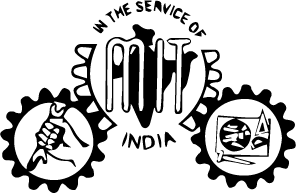History - MIT
History
About MIT Video
With the dawn of Independence, the need for establishing a sound
technological basis for proper industrial advancement of the country
was realised. Towards the fulfilment of this need, a number of
Engineering Institutions were established by several State
Governments. It was at this juncture that Mr.C.Rajam, with his
characteristic pioneering spirit, patriotic fervor and unwavering
enthusiasm came up with a munificent donation of Rs. 5 lakhs through
the sale of his house and founded the MIT, with the blessings of the
Sage of Kanchi, the Jagadguru Sankaracharya Swamigal. In this noble
effort, Mr.Rajam enjoyed the inspired assistance of a few
distinguished citizens, notably Subbaraya Aiyar, M.K. Ranganathan,
L.Venkatakrishna Iyer, K.Srinivasan and C.R. Srinivasan and also
generous donations from the public and industries. Thus in July 1949,
the MIT was established as an All India Technological Institution with
the two-fold objectives of providing
- Engineering education of University standard in specialised fields
- Facilities for research in these and allied fields, free from regional limitations both in regard to its staff and students.
Life of Shri. C. Rajam
Shri Chinnaswami Rajam was described as a "pioneer in the Industrial Field"
by the late Dr.C.P.Ramaswami Iyer. It is normally a fact that an enterprising
person becomes an entrepreneur, leading himself to the path of being crowned
as an Industrial Magnate. Until the first half of his life time Shri Rajam,
even though youthful, dynamic, aspiring and hard-working, did not get his break.
He was born on 28th Nov. 1882, in the village of Swamimalai, near Kumbakonam. He had his High School education at the Town High School, Kumbakonam. Till 1904, he was staying at Kumbakonam, searching for a job. In 1904, he joined the Salem Government Weaving School, and learnt the art of weaving. Then he started his own handloom factory at Salem with a capital of Rs.1,000/- and manufactured dhoties, towels, shirtings etc, with fly-shuttle looms. After that, Shri Rajam tried out his hand in many jobs like grocery shop, canvassed orders for a tannery firm, managed a leather goods show room etc.
He was born on 28th Nov. 1882, in the village of Swamimalai, near Kumbakonam. He had his High School education at the Town High School, Kumbakonam. Till 1904, he was staying at Kumbakonam, searching for a job. In 1904, he joined the Salem Government Weaving School, and learnt the art of weaving. Then he started his own handloom factory at Salem with a capital of Rs.1,000/- and manufactured dhoties, towels, shirtings etc, with fly-shuttle looms. After that, Shri Rajam tried out his hand in many jobs like grocery shop, canvassed orders for a tannery firm, managed a leather goods show room etc.
Unique Experiment
At a time when all other Engineering Institutions were offering
conventional courses in Civil, Mechanical and Electrical Engineering
at the Under-graduate level, it was the rare innovation and foresight
of Mr. Rajam that impelled him in the eve of his life to launch on a
bold experiment of introducing for the first time in our country,
totally new areas of specialisation in Engineering, viz. Aeronautical
Engineering, Automobile Engineering, Electronics Engineering and
Instrumentation Technology, the entrants to these disciplines being
Science graduates. This was a pioneering step in engineering education
in India. How wise and foreseeing this selection was, is shown by the
striking growth that India has made in road transport and in the
manufacture of road vehicles of all types; in the progress of civil
and military aviation and the manufacture of military aircraft; and in
the enormous growth in the applications of electronics and the
electronics manufacturing industry. Instrumentation and Control which
form the bedrock of industry did not exist in India as a subject of
study in 1949; even the name was still below the horizon. Now this
branch of applied science and technology has become all important in
every industry, small or big, light or heavy. How useful and relevant
the trained manpower in these fields has been, is borne out by the
fact that a significantly large number of the past students of MIT are
now holding key positions in research and development organisations,
manufacturing industries and educational institutions within the
country and abroad. The broad-based curriculum at the MIT has indeed
proved to be particularly advantageous with the ever-increasing need
for engineers adequately equipped to handle a wide range of problems.
Humble Beginnings and Herculean Efforts
The Institute owes its present stature to the unstinted efforts and
dynamic leadership of its Founders, Chairmen and Members of the
Governing Council, Directors, Staff and Alumni and also, in no small
measure, to the quality and character of its students during the last
50 years.

